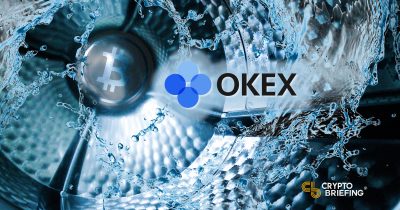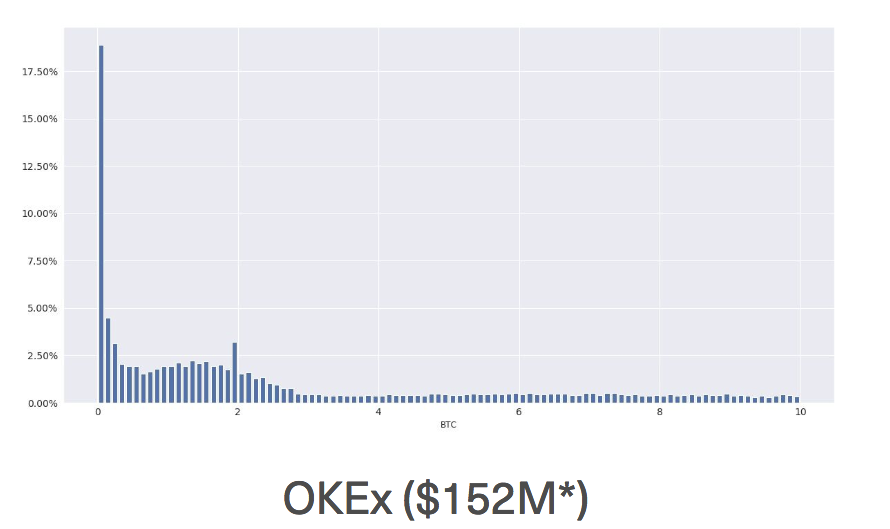OKEx Comes Clean On Wash Trading Problem

Share this article
A recent Bitwise report threw the lid open on crypto’s chronic issue of wash trading. Now a senior OKEx executive has admitted to Crypto Briefing that the exchange has a problem with artificially inflated volumes.
When asked about allegations that OKEx had been engaged in wash trading, Lennix Lai, Director of Financial Markets for OKEx, told Crypto Briefing “we would acknowledge that”.
But, he said, this was “market-driven behavior”, based on a the unique fee structure used by the exchange. Many OKEx clients, he said, are trying to “trade smart” by gaming that fee structure.
“I would say there is a lot of suspicious trade activity on OKEx,” explained Lai. “And we’re working on a lot of measures to prevent that stuff.”
When asked if the exchange itself was engaged in wash trading, Lai was emphatic: “Of course not.”
Lai himself is “Responsible for “forging a fair, transparent, and orderly market” according to his LinkedIn profile.
OKEx offers an eight-tier fee schedule, charging lower transaction fees to accounts which trade frequently on the exchange’s spot and futures markets. Accounts with high 30-day volumes can enjoy discounts on transaction fees, which incentivizes frequent trading,
A tier-1 trader – anyone with a volume below 100 BTC – has to pay a 0.1% maker and 0.15% taker fee for all spot trades; a tier-8 trader (the highest level), who needs to have traded more than 50,000 BTC in the past 30 days, only has to pay 0.02% and 0.05% maker and taker fee, respectively.

Speaking at an institutional meetup, Lai explained that wash trading allowed clients to quickly achieve the lower fees. “It takes time to build volume”, he said, “and one of the easiest ways, especially for some of the Chinese traders, is to wash trade some of the more illiquid pairs.” Once they achieve tier-8 volume, they can trade at low cost.
Lai highlighted that the exchange was working hard to prevent this. This included increasing tick size – the minimum price movement – which he said would make it “substantially” hard to inflate volumes. “If you want to wash trade,” he said, “you would have to spend a lot more resources”.
Although OKEx implemented KYC checks on its platform last August, this only applies to withdrawals. Accounts can still trade without verifying identities. This means that stopping wash trading is often “like a game of cat and mouse”, Lai said. Whenever an exchange shuts down an account, the client can just set up a new one to continue trading.
The plan is that everyone will have to confirm their identity before they can use the OKEx platform. “Wash trading can easily be prevented if you require clients to do KYC”, he said. Lai explained that once the exchange has implemented full KYC, they will be able to quickly close accounts found to be trading with themselves.
The Bitwise report, which concluded that 95% of the sector’s volume was fake, was, to many in the industry, merely a confirmation of deeply-held suspicions.
In a 250-slide presentation, originally to the SEC, the asset management group said activity on many exchanges had “idiosyncratic” patterns, often with no peaks around integers and sudden, inexplicable drops at certain trade sizes.
Described as an “analysis of real Bitcoin trading volume“, the Bitwise report said OKEx’s volumes displayed a clear “warning sign“. As the graph below shows, activity inexplicably dropped around the three BTC mark and effectively “flat-lined” at all higher bucket sizes.

But although OKEx may be the first to publicly acknowledge the issue, they may not be the last – wash trading is evidently rampant at many exchanges.
Despite the public shaming of the crypto industry, Lai still believes that the Bitwise report “is not comprehensive, because they only focus on Bitcoin“. He suggested that wash trading is also an issue on smaller tokens, which have far more illiquid markets.
Even exchanges included in the new Messari “Real 10” volume index have problems, says Lai. The Messari trade volume figure is derived from the top ten exchanges that the crypto data site believes to “have reported significant and legitimate crypto trading volumes via their APIs,” and includes Binance, Bitfinex, Bitflyer, Bitstamp, Bittrex, Coinbase Pro, Gemini, itBit, Kraken, and Poloniex.
Although Lai wouldn’t specifically call out any one individual exchange, he said that most platforms had the same problem OKEx had: clients artificially inflating volumes to take advantage of discounted fee structures.
The author is invested in digital assets, including BTC which is mentioned in this article.
